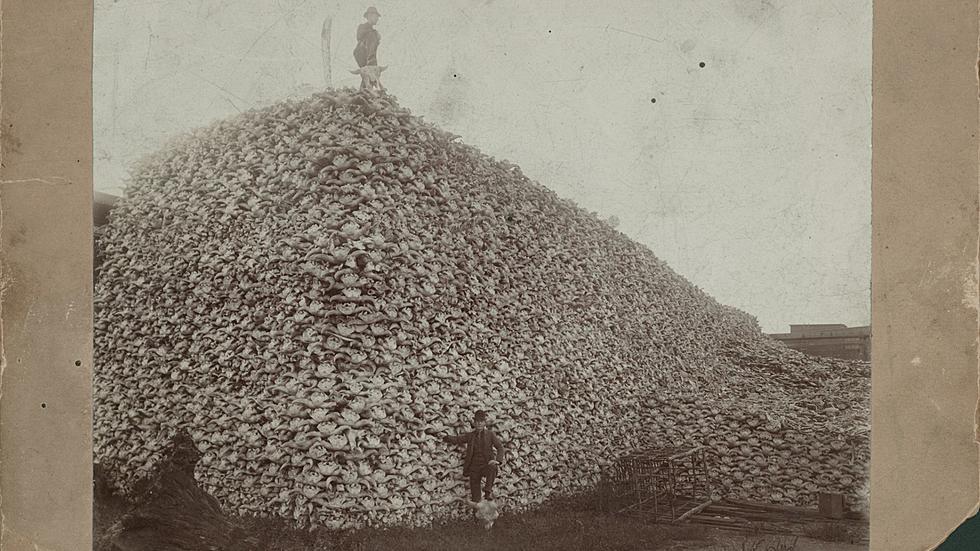
Historic ‘Bison Skull Mountain’ Photo Was Taken in Michigan
I didn’t grow up in Michigan. Primarily, my schooling was all in Oklahoma and Kansas, where it’s actually required (or at least it was) to take courses on Native American history. Of course, every book is subject to the author’s interpretation, and researchers who put it together, but I remember always being struck about one constant in every book.
While learning about the Native Americans’ dependency on the American Bison, there was always an accompanying photo of a mountain of bison skulls with two men standing on and around it. I always thought, because I was studying Native culture, it was taken somewhere in the American west. But it turns out, this iconic, historical photo was taken in Michigan.

Michigan Carbon Works was a company in the late 1800s that primarily made products like fertilizer, pigments, glue, and ash. They were located on the northeast side of Rouge, Michigan, where I-75 now crosses through.
For those unfamiliar with the early production of the items that this manufacturer made, their primary source of fuel, and base was animal bones. And as Americans moved further west, they discovered MASSIVE herds of an abundant species of bison that fulfilled so many needs of the company.
So, killing, and collecting bison for their bones suddenly became a huge industry in the U.S., with some “finders” paying farmers big money to remove bison bones from their property. In fact advertisements, like this one from the Grafton News and Times from July 23, 1885, suggests they were really serious about their job.
“Notice to Farmers: I will pay cash for buffalo bones. Bring them in by the ton or hundred. I will give fifty pounds of the best twine for one ton of bones, for this month only, or a $40 sewing machine for forty tones. I want 5000 tons this month.”
It’s hard to imagine what several tons of bison bones would look like, but that is where this historic photo comes into play. It was taken sometime in 1892, of a literal mountain of bison skulls that were brought to Michigan Carbon Works to be broken, ground down, and burned to create their products.
The Detroit Public Library has the original image on display.
Now, the tragic part of this story is, this business of eradicating the American Bison, also largely impacted the Native American populations across the Great Plains. And THAT is where this photo came into play when I was learning about Native culture as a kid. This photo was shown to represent how massive, and tragic the eradication of the Bison really was.
And given the amount of bones buyers were looking for, this sadly only represents a small fraction of what they actually collected.
Thankfully, thanks to conservation efforts, the bison is bouncing back in population, and new methods of production have been devised to avoid using animal bones in this capacity. But it’s photos like this that serve as reminders of how short-sighted we once were in this country.

